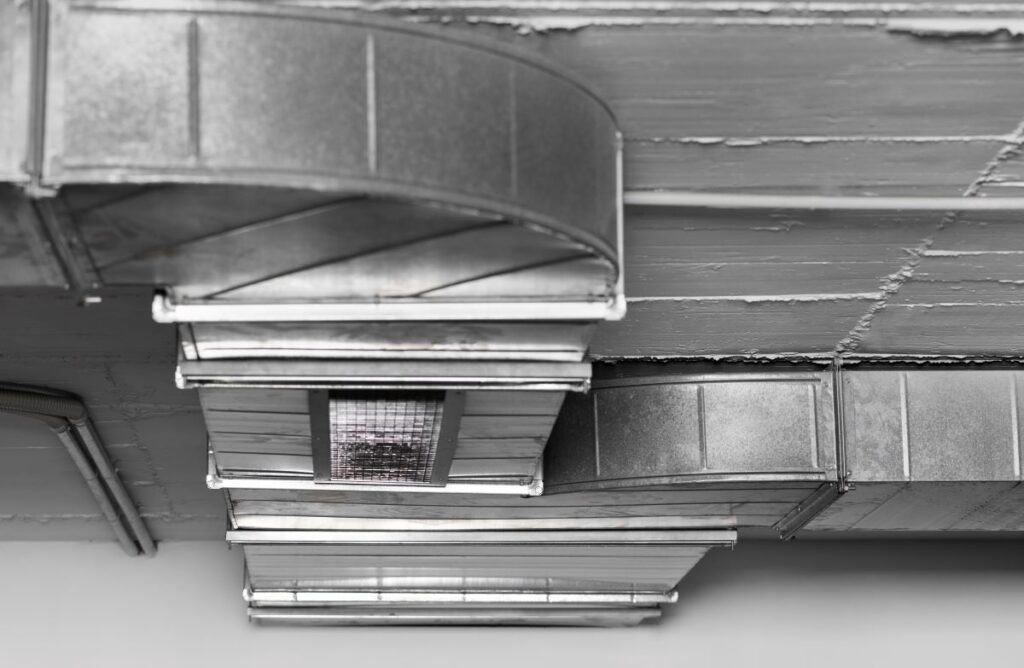As a building owner in the ever-changing climate of Texas, ensuring your property is equipped with an efficient HVAC (Heating, Ventilation, and Air Conditioning) system is vital. One crucial aspect of this system that often requires meticulous attention is duct size calculations. In this article, we will explore why understanding and mastering duct size calculations is essential for the optimal performance and energy efficiency of your property’s HVAC system.
Table of Contents
The Importance of Accurate Duct Size Calculations:
Duct size calculations play a pivotal role in determining the effectiveness of your HVAC system. The ductwork in your building serves as the respiratory system, distributing conditioned air to various spaces. If the ducts are too small, the system will struggle to meet the heating or cooling demands, leading to inefficiency and increased energy consumption. On the other hand, oversized ducts may result in uneven temperature distribution and wasted energy.

In the dynamic climate of Texas, where summers can be scorching and winters surprisingly chilly, a well-designed HVAC system with accurately calculated duct sizes is crucial for maintaining indoor comfort and managing energy costs effectively.
Efficient Cooling in Texas Summers:
Texas summers are renowned for their intense heat, placing a significant demand on cooling systems. Accurate duct size calculations are key to ensuring that your HVAC system can effectively cool your property during the sweltering summer months. Undersized ducts can lead to insufficient airflow, causing certain areas to remain uncomfortably warm, while oversized ducts may result in short-cycling and increased wear on the system.
By investing time and resources in precise duct size calculations, you can tailor your HVAC system to the specific cooling needs of your property, providing a comfortable indoor environment for occupants while optimizing energy efficiency.
Maintaining Energy Efficiency in Winter:
While winters in Texas may not be as severe as in some other states, the occasional cold spells require reliable heating systems. Properly sized ducts contribute significantly to the energy efficiency of your heating system during the colder months. Inefficient ductwork can lead to heat loss, reduced warmth in certain areas, and unnecessary strain on the heating equipment.
Mastering duct size calculations allows you to strike a balance, ensuring that your HVAC system operates efficiently in both heating and cooling modes. This not only enhances comfort for your building’s occupants but also contributes to cost savings and a reduced environmental impact.
Avoiding Common Pitfalls in Duct Sizing:
In the realm of duct size calculations, several common pitfalls can compromise the performance of your HVAC system. One frequent mistake is neglecting the impact of bends, turns, and transitions in the ductwork. These elements can impede airflow and should be factored into the overall calculations to ensure an accurate representation of the system’s requirements.
Additionally, overlooking insulation considerations can lead to energy losses and reduced efficiency. Well-insulated ducts help maintain the temperature of the conditioned air as it travels through the system, preventing unnecessary heat gain or loss along the way.
Consulting with HVAC Professionals:
Mastering duct size calculations may seem complex, but you don’t have to navigate it alone. Engaging with HVAC professionals who specialize in duct design and calculations can provide valuable insights and ensure that your system is optimized for peak performance.
These professionals utilize industry-standard methods and advanced software to assess factors such as duct material, insulation, and the layout of your property. By collaborating with experts, you can confidently make decisions that enhance the efficiency and longevity of your HVAC system.
Conclusion:
In conclusion, as a building owner in Texas, mastering duct size calculations is a crucial step towards ensuring the optimal performance and energy efficiency of your HVAC system. Accurate duct sizing is essential for effectively cooling your property during the scorching summers and maintaining efficient heating in the occasional cold spells.
By avoiding common pitfalls, such as neglecting the impact of ductwork elements and overlooking insulation, you can create a well-balanced system that provides comfort to your occupants while minimizing energy costs. Consider consulting with Mechanical Engineering professionals to navigate the complexities of duct size calculations and make informed decisions that contribute to the overall sustainability of your property.



